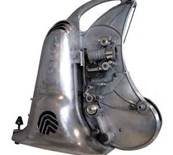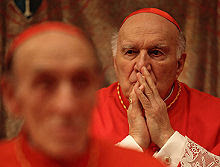 |
| Not Columbus, not 1972 |
Our introduction to postmodernism came, in of all places, Columbus Ohio--not, or not then, a pacesetter in architecture. We were tourists, and we arranged to eat dinner in one of the city's trendy new restaurants. The place occupied a long-narrow space several feet below street level, and everything was painted black. To our surprise, the resturateur and his designer had made only the most minimal effort to cover up the "guts" of the place--the ductwork and electrical cables that made the place function, the old brick. No lowered ceiling, no styrafoam ceiling panels, no wall paneling. Painted black, yes, but hardly invisible; indeed, right in your face. It was 1972 or 1973.
 |
| Pompidou Center |
Across the Atlantic, and doubtless unaware of Columbus's early lead in advanced architectural design, Renzo Piano and his colleagues were working on Paris's Pompidou Center. It would open in 1977 to considerable acclaim and be understood thereafter as a seminal work in the postmodern vein.
 |
| More Pompidou Center |
Every pipe and conduit and strut was exposed; indeed, some may have been added for emphasis. The architectect seemed determined to make a rather ordinary stairway a central feature of the design and "look" of the place.
The modernists of the 1930s and 1940s had taken a very different approach. While valuing the technological, machine aesthetic as much as the postmodernists, their interest in speed and movement led designers to give many of their creations rounded features, and to sheath the products they made in sleek skins of metal and plastic.
 |
| Probably a film projector |
In this "streamlined" universe, key ingredients of speed and movement--motors and wheels--were hidden away. The pencil sharpener and the toaster appeared ready to take off.
By this definition at least, Rome has come late, and barely, to the postmodern revolution. Renzo Piano was no help. Although Rome would be the site of one of his best buildings--the Parco della Musica--it shows not a hint of the architect's place in the postmodern pantheon. Not a duct in sight.
We've found two examples of what we'll call Pompidou Postmodernism in Rome: one in architecture, the other in product design.
 |
| The beast unveiled |
The product is the motorcycle. Not all of them, by any means; some--perhaps most--have been designed and presented in the modernist mode, or in some combination. But some, especially the big, muscular cycles with enormous engines--750 and even 1200cc's--could trace their heritage to that Columbus restaurant. Their huge and complex engines could be covered with plates of steel, but instead they're exposed, letting us know just what it is we're riding, and what makes it go.
 |
| Exposed girders at MACRO |
The building we have in mind is one of our favorites: the MACRO gallery, in the Nomentana quartiere. It's a lovely combination of sleek, curvilinear modernism and defiant Pomidou Postmodernism.
While the bathrooms are aggressively modern--whether they can actually be used, we can't say (oh, yes we can, says Dianne), but they sure look good--that and other modernist flourishes succeed in part because of the postmodern environment in which they're embedded: the exposed steel girders, with bolts and all, there to remind visitors of the brewery that once operated on the grounds.
 |
| Revealing glass elevator, Macro |
The elevator, its innards in full view, challenging us to accept technology as the complex phenomenon it is; and a sturdy, unpretentious metal stairway that subtly suggests that our fanciful designs--those sleek skins and surfaces--are products of animals who learned to walk upright.
Bill
For more pictures of MACRO,
see an earlier post.
 |
| Postmodern muscle |
 |
| Modern, streamlined muscle |













